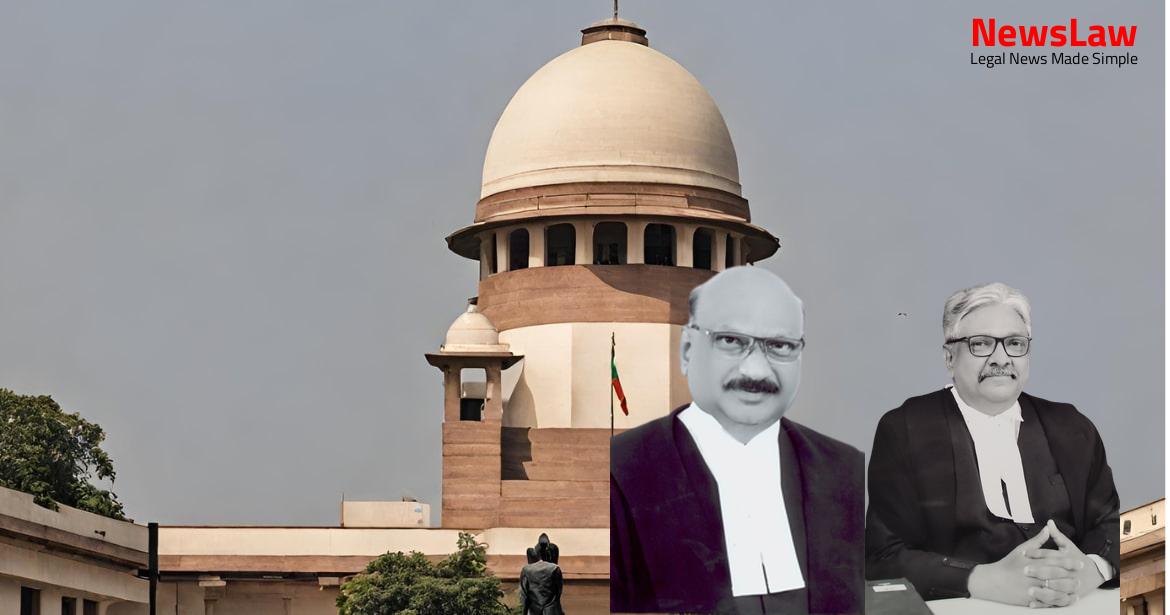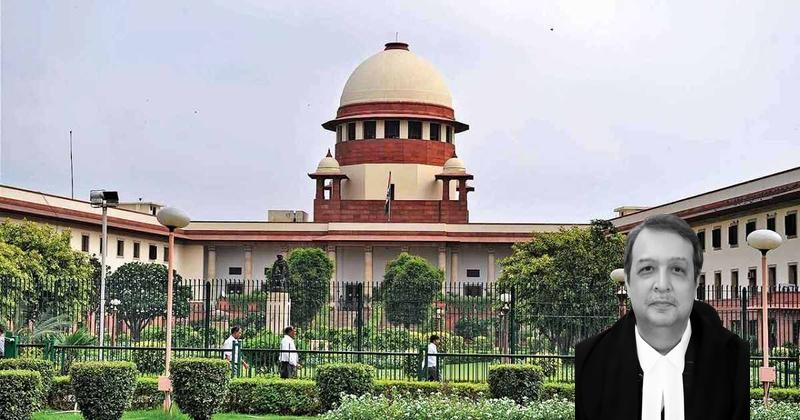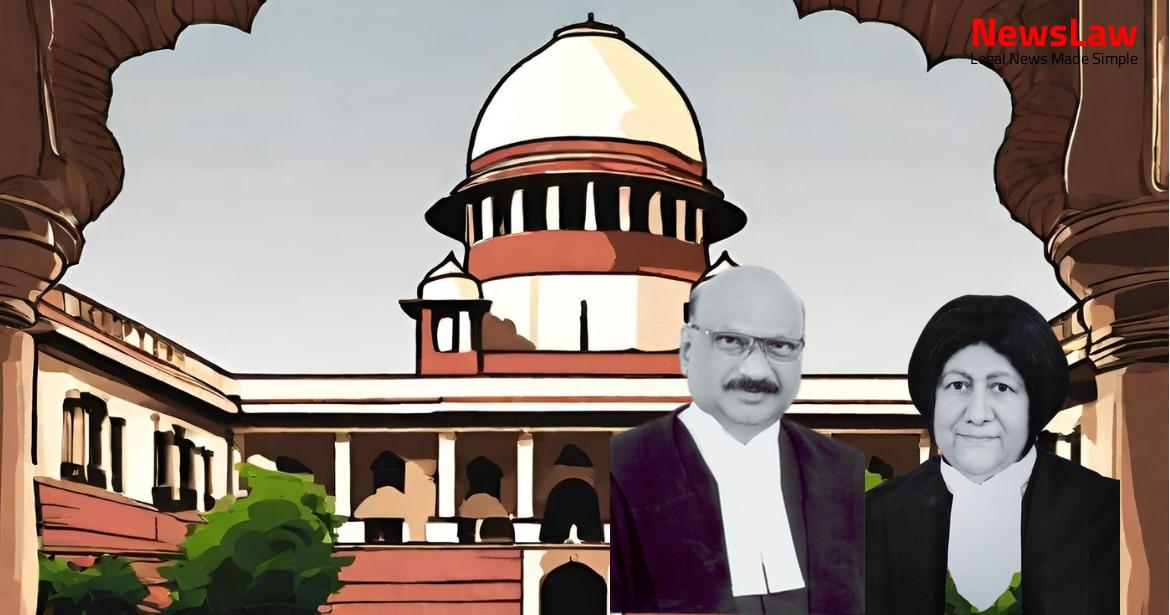In a significant legal battle before the Supreme Court of India, the appeal filed by Original Name 1 has been dismissed. The case involved intricate legal arguments and detailed examination of the facts presented by both the respondent-State and the petitioner. This summary encapsulates the key aspects of the judgment, shedding light on the critical legal points that led to the dismissal of the appeal.
Facts
- The High Court concurred with the trial court’s view that the only possible hypothesis was homicide by the appellant.
- All occupants of the deceased’s matrimonial home turned hostile during the trial.
- The written statement under Section 313 Cr.PC mentioned that the appellant’s brothers untied the shawl allegedly used by the deceased for suicide.
- The accused were initially acquitted but later convicted under Section 302 of the IPC.
- The High Court directed a fresh examination under Section 313 Cr.PC and consideration of Section 106 of the Evidence Act.
- Evidence pointed towards murder by throttling, ruling out suicide.
- The appellant’s claim of a fight between his mother and deceased was dismissed as an embellished version.
- Scratches on the assailant were noted by a witness, supporting the murder theory.
- The appellate court found the case for Section 498A not established.
- The appellant’s brothers and sisters-in-law witnessed him assaulting his wife while under the influence of alcohol.
- The appellant and his wife had a happy marital life, but she was distressed due to their inability to have children.
- The appellant claimed that the blood in nail clippings was from an attempt to untie the noose around his wife’s neck.
- Post-mortem injuries on the deceased indicated physical violence, including contusions and abrasions.
- The prosecution alleged that the deceased faced physical and mental cruelty from the appellant and his mother.
- Witnesses testified to seeing signs of throttling and nail marks on the deceased’s body.
- The appellant provided conflicting statements about his wife’s death, initially claiming she was hospitalized for a sore throat.
- Several witnesses, including neighbors and family members, supported the prosecution’s version of events.
- The appellant admitted to consuming alcohol on the day of the incident, and his mother reportedly inflicted injuries on him.
- The court noted discrepancies in the appellant’s statements and actions surrounding the death of his wife.
Also Read: Analyzing Legal Reasoning in a Poisoning Death Case
Arguments
- The appellant relied on several judgments to argue for a specific exception in the Indian Penal Code regarding culpable homicide not amounting to murder.
- He contended that the appellant should be given the benefit of Exception 4 to Section 300 of the IPC which deals with sudden fights in the heat of passion without premeditation.
- The appellant’s lawyer emphasized that in such cases, it is immaterial to consider which party initiated the provocation or assault.
- Despite the claim of suicide by the appellant’s wife, the prosecution’s case should not be overlooked according to the lawyer.
- The focus of the submission was on altering the conviction from Section 302 to Section 304 Part-II of the IPC.
- The appellant’s counsel highlighted that the deceased had a history of a miscarriage and needed support, which led to the events of the incident.
- It was mentioned that the appellant had been drinking on the evening in question, resulting in the wife going to the specified location due to his intoxication and the wife’s depression.
- The learned counsel for the respondent-State strongly supported the order of the High Court.
- It was argued that this is a clear case of murder by throttling.
Also Read: Chhabildas v. State of Maharashtra: Land Reservation and Acquisition Case
Analysis
- Burden of proving exceptions under Section 300 of the IPC is on the accused.
- The accused can rely on evidence from prosecution or defense to establish exceptions.
- Failure to set up a defense does not forfeit the right to rely on an exception.
- A false case set up by the accused does not prevent establishing the case under exceptions of Section 300 IPC.
- Motive, intention, and knowledge are distinguishable but can merge in some cases.
- The burden of proof lies on the accused unless the law states otherwise.
- An act can be punished as murder only if it qualifies as culpable homicide declared to be murder.
- Exception I of Section 300 requires deprivation of control by the accused due to grave and sudden provocation.
- Intention should be gathered from general circumstances paying regard to intoxication degree.
- The accused can be presumed to have intended the natural consequences of the act.
- Discrepancies in statements and false defenses can affect the burden of proof.
- The accused must establish facts within their exclusive knowledge by preponderance of probability.
- The accused’s statements under Section 313 Cr.PC are valuable even with inculpatory admissions.
- The court may render a guilty verdict based on evidence despite the accused’s admissions.
- Intoxicated individuals are presumed to have the same knowledge as if they were sober.
- In cases where mens rea is required, the question of intent or knowledge is crucial.
- The burden of proof is on the accused to prove circumstances that fall within exceptions, with the court presuming their absence.
- The right of private defense can be a valid defense even if not explicitly set up under the law.
- Evidence must be carefully weighed to establish the guilt of the accused beyond reasonable doubt.
- Injuries caused by the accused with lethal weapons have been a subject of legal scrutiny in previous cases.
- Intoxication does not excuse the accused from being held accountable for their actions.
- Section 86 of the IPC discusses the liability of a person who commits an offense requiring a particular intent or knowledge while intoxicated.
- The section presumes that despite intoxication, the accused is held liable as if he had the same knowledge or intent as if he were not intoxicated.
- This presumption can be rebutted if the intoxicating substance was administered without the person’s knowledge or against their will.
- If death is caused due to sudden provocation, mistake, or accident, exception I may apply.
- Provisions of Section 105 of the Evidence Act impose burdens on the accused, requiring them to prove circumstances bringing the case within relevant exceptions of the Penal Code or other laws defining the offense.
- The burden includes proving the existence of circumstances and introducing evidence to negate the presumption of their absence.
- Appellant’s act amounts to murder as per Section 300 of the IPC.
- Appellant’s claim of it being culpable homicide not amounting to murder under Section 304 Part-I is baseless.
- The act of throttling the wife by the appellant is evident in this case.
- None of the exceptions in Section 300 are applicable.
- No reason to interfere with the impugned judgment.
Also Read: Analysis of Circumstantial Evidence in Criminal Case
Decision
- The appeal filed by Original Name 1 stands dismissed.
- Reasons for dismissing the appeal were presented in detail.
- Original Name 1’s argument regarding XYZ was considered and rejected.
- The judgement highlighted the key legal points that supported the dismissal.
Case Title: PAUL Vs. THE STATE OF KERALA (2020 INSC 69)
Case Number: Crl.A. No.-000038-000038 / 2020



